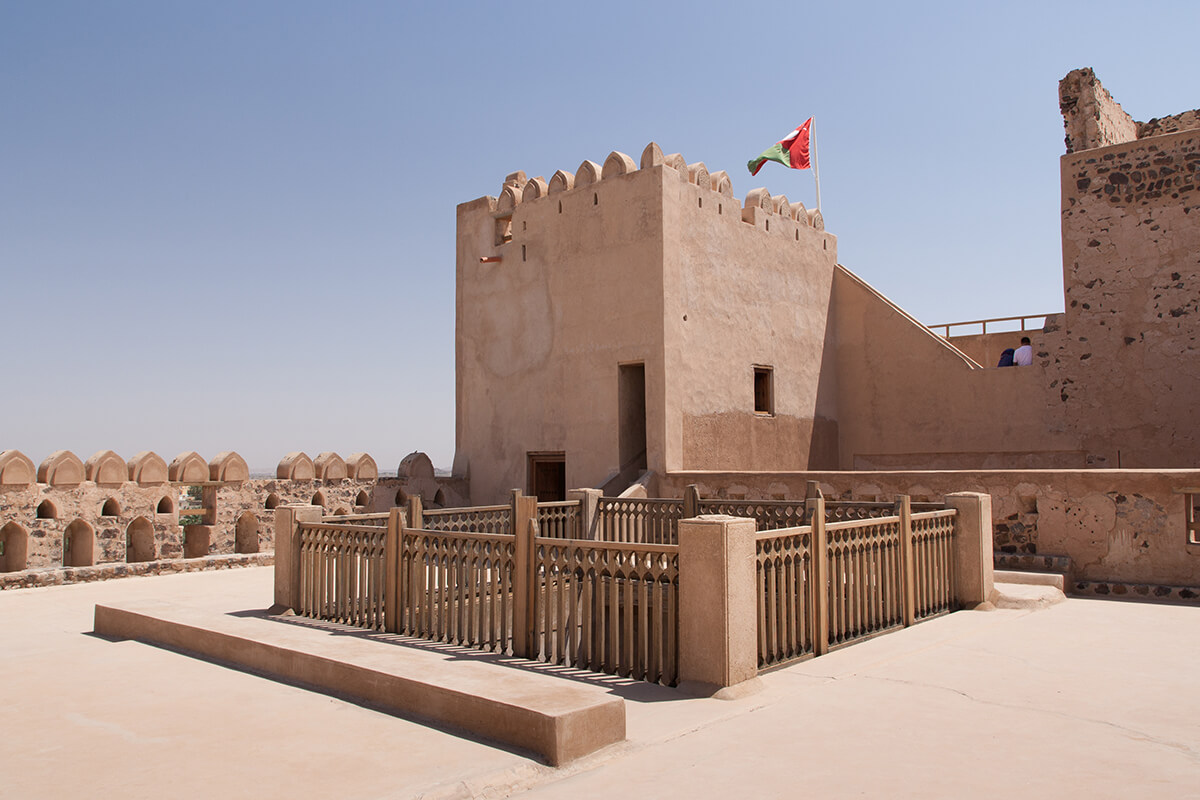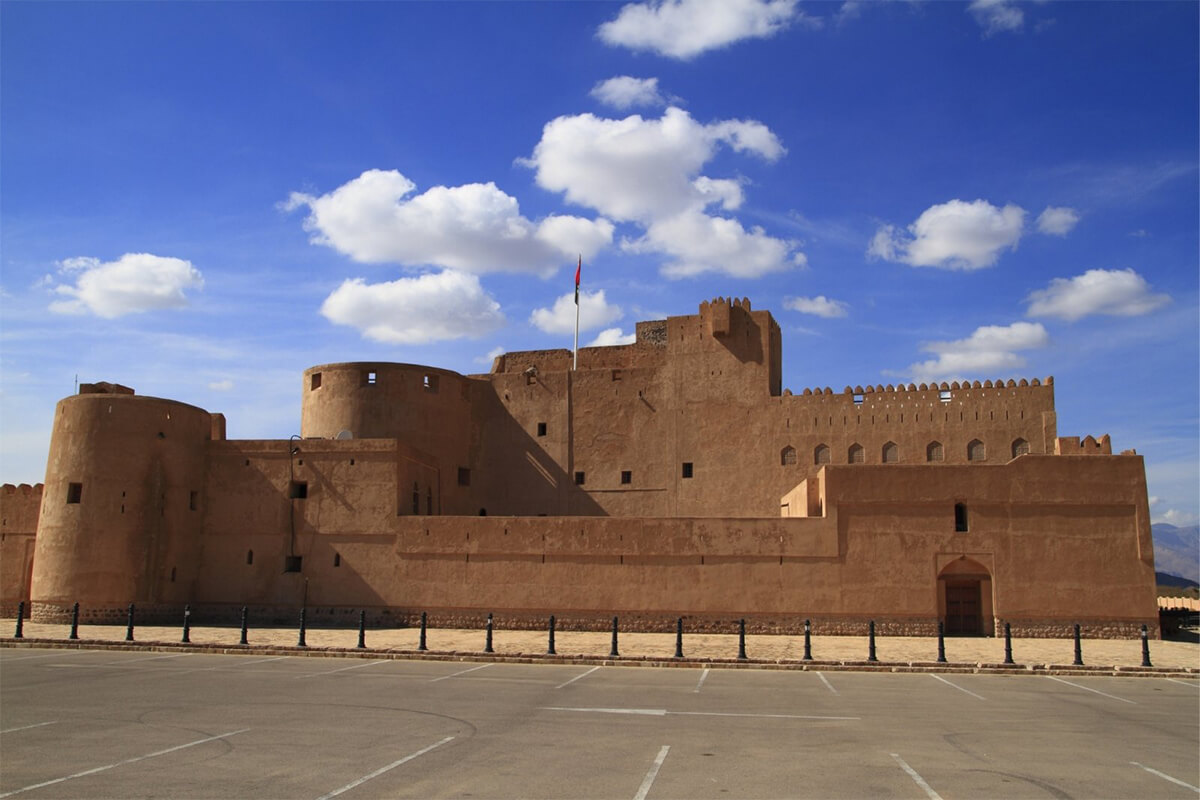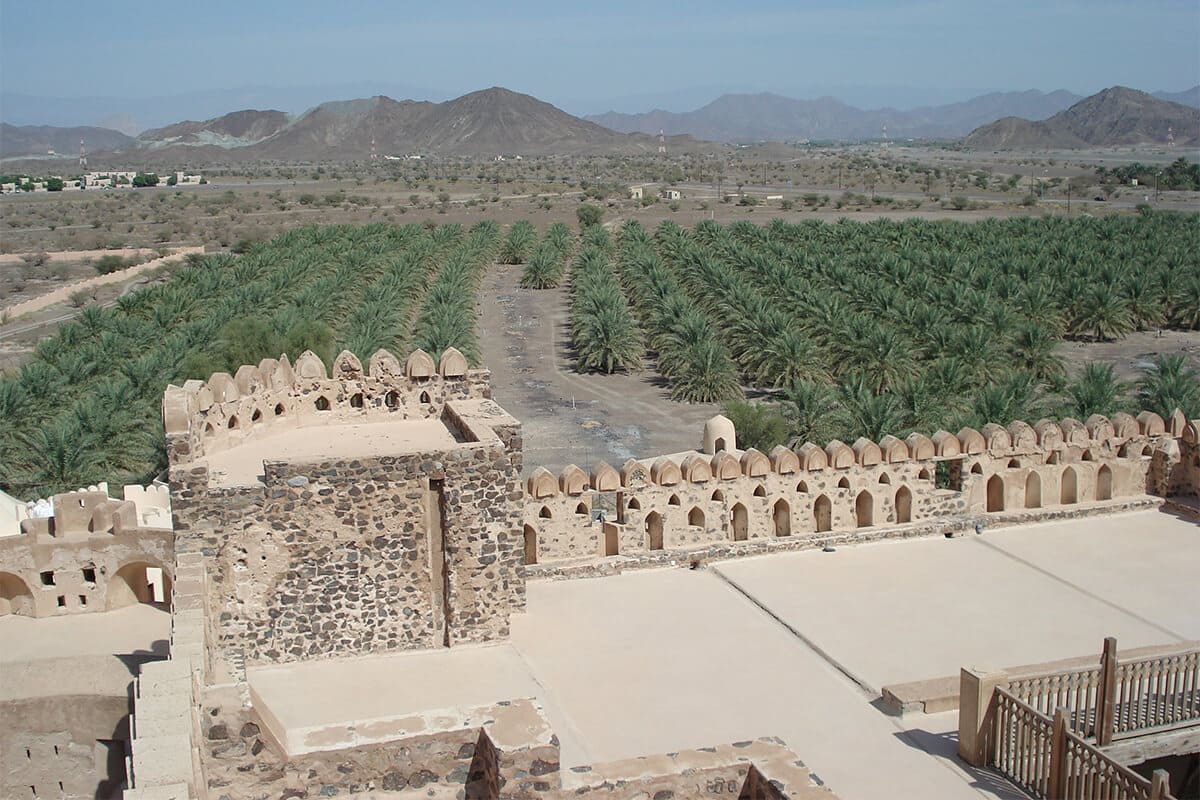Oman is home to many historical and architectural wonders, and one of the most iconic landmarks in the country is Jabrin Castle in Bahla. This stunning fort, also known as Jabrin Fort, stands as a remarkable testament to Oman’s rich heritage, intricate craftsmanship, and strategic importance throughout history. Located in the town of Bahla, just 40 kilometers from the city of Nizwa, Jabrin Castle is one of the best-preserved forts in Oman and a must-see for visitors interested in exploring the nation’s cultural and architectural legacy. With its fascinating history, stunning architecture, and breathtaking views, Jabrin Castle is a landmark that encapsulates the soul of Oman’s past. For those looking to immerse themselves in Omani history, Jabrin Castle is a key highlight on many Oman tours, offering visitors a glimpse into the country’s magnificent heritage.
Discover Oman’s Past by Exploring the History of Jabrin Castle
The history of Jabrin Castle dates back to the late 17th century. The castle was constructed during the reign of the Yaruba dynasty (1679–1744), under the leadership of Imam Bil’arab bin Sultan. Built as a strategic military stronghold, it served as a place of defense and a royal residence. At the time of its construction, Oman was experiencing political instability, and the fort played an important role in consolidating power and maintaining control in the region. The site of the castle, perched on a hill overlooking the oasis town of Bahla, provided a perfect vantage point to defend against potential invaders and served as a crucial military asset.
The castle’s construction was overseen by a skilled team of architects and artisans, showcasing the high level of craftsmanship and architectural ingenuity of the period. Jabrin Castle was designed not only to serve as a fortification but also as a lavish residence for the royal family. It represents a fine blend of practicality and luxury, with features that provide both defensive capabilities and the comforts of royal life.
In the 19th century, after the fall of the Yaruba dynasty, Jabrin Castle continued to be a significant location, playing an important role in Oman’s history. It was also used as the residence of the Imam of Oman, making it a central point for the administration and governance of the region. Over the years, the castle’s importance shifted, and it gradually became more of a historical site than a military stronghold. Despite facing the challenges of time and weather, Jabrin Castle has managed to retain much of its original structure and charm.
The Architectural Beauty of Jabrin Castle
Jabrin Castle is a true architectural gem, showcasing the intricate design principles that were prevalent during the time of its construction. The castle features a combination of defensive features, living spaces, and decorative elements that demonstrate the grandeur and sophistication of 17th-century Oman.

The Defensive Features of Jabrin Castle
The strategic location of Jabrin Castle on a hilltop allowed it to offer both a commanding view of the surrounding area and a natural advantage in terms of defense. The castle’s walls are thick and robust, built to withstand both natural elements and potential attacks. The castle’s defensive design includes multiple layers of protection, from its fortified gates to its carefully planned towers.
The towers of Jabrin Castle are perhaps one of its most striking features. Rising high above the surrounding landscape, these towers were designed not only to provide observation points but also to serve as defensive positions in the event of a siege. The towers have narrow slits for archers and shooters, offering protection to the castle’s occupants and enabling them to defend the castle effectively.
Additionally, the castle’s high walls and narrow, winding staircases created an environment that was difficult to infiltrate. The castle’s layout was designed to disorient invaders, with a complex system of passageways and hidden chambers, making it easier for defenders to maintain control. Some of these features, like the secret staircases and hidden rooms, have added an air of mystery to the castle, further enhancing its allure as a historical site.
Experience the Royal Living Spaces
While Jabrin Castle was undoubtedly built as a military fortification, it was also intended to serve as a residence for the ruling family and other high-ranking officials. The interior design of the castle is a reflection of the royal lifestyle during that era. The rooms are spacious, with beautifully crafted wooden ceilings, elegant carvings, and intricate patterns that showcase the artistic prowess of Omani craftsmen.
The Sultan’s chambers, located on the upper floors of the castle, were designed to provide comfort and privacy for the royal family. These rooms feature stunning wooden paneling and painted ceilings with geometric designs and motifs typical of Islamic art. The attention to detail is evident throughout the castle, with delicate carvings on wooden doors, windows, and arches. These elements not only add to the beauty of the space but also serve as a testament to the skills of the Omani artisans of the time.
The castle also has several large halls used for public gatherings, meetings, and ceremonial events. These areas are grand in scale, with high ceilings and decorative elements that demonstrate the wealth and power of the ruling family. The main hall features a large, beautifully painted ceiling, with geometric patterns and arabesques that highlight the intricate craftsmanship of the period. The use of local materials such as stone and wood further emphasizes the connection between the castle’s design and the natural environment of Oman.
Visit the Prayer Halls and Appreciate Their Religious Significance
One of the most significant aspects of Jabrin Castle is its spiritual dimension. The castle contains a small but beautifully designed mosque and prayer halls, reflecting the importance of religion in the lives of the ruling family and their subjects. The prayer halls are decorated with intricate carvings and inscriptions, and the mosque is a serene and peaceful space that offers a glimpse into the spiritual life of Oman’s past.
The presence of prayer spaces within the castle reflects the strong Islamic identity of the region. The design of these spaces was intended to offer a sense of tranquility and reflection, allowing the castle’s inhabitants to engage in daily religious practices. The mosque’s minaret offers an elevated viewpoint, allowing residents to connect spiritually while maintaining a sense of authority over the surrounding landscape.
Explore the Features of Jabrin Castle
When visiting Jabrin Castle, there are several key features to explore that highlight the castle’s unique history and architectural beauty.
Walk Through the Courtyard
The central courtyard is the heart of the castle, where visitors can experience the sense of grandeur and open space that once served as a place for social gatherings and military activities. Surrounded by high stone walls and towers, the courtyard offers visitors an intimate view of the fortress’s layout. The tranquil atmosphere of the courtyard allows for reflection on the castle’s historical significance and its role in the cultural life of Oman.

Climb the Towers for Stunning Views
The towers of Jabrin Castle provide some of the best views in the region. Climbing to the top of these towers, visitors are rewarded with panoramic views of the Bahla Oasis, the surrounding desert, and the rugged mountains that rise in the distance. These towers were built not only for defense but also for strategic oversight, allowing the castle’s inhabitants to spot any potential threats from miles away.

Marvel at the Painted Ceilings
One of the most remarkable features of Jabrin Castle is the elaborate painted ceilings that adorn many of its rooms. The geometric patterns and intricate arabesques are beautifully executed, and they reflect the artistic styles prevalent during the period. These ceilings are a testament to the skilled craftsmanship of Omani artisans and provide visitors with a glimpse into the region’s rich artistic heritage.
Discover the Hidden Rooms and Passageways
Jabrin Castle is filled with hidden rooms, secret staircases, and passageways that were designed to serve both practical and strategic purposes. These hidden features allow visitors to explore the castle in a more interactive and adventurous way. Some rooms are tucked away from plain sight, while others are concealed behind false walls or hidden doors. Exploring these secret spaces gives visitors a sense of the mystery and intrigue that once surrounded this fortress.

Why Jabrin Castle is a Must-Visit Landmark
Jabrin Castle is not only a historical monument but a living symbol of Oman’s rich cultural and architectural heritage. The castle offers visitors an immersive experience, providing a window into the lives of the royal family and the military history of Oman. The combination of stunning architecture, rich history, and beautiful surroundings makes Jabrin Castle one of the most significant landmarks in the country.
For travelers to Oman, Jabrin Castle is an unmissable destination that offers an opportunity to delve into the nation’s past while exploring one of its finest architectural achievements. Whether you are a history buff, an architecture enthusiast, or simply a curious traveler, Jabrin Castle will leave a lasting impression.
Plan Your Visit to Jabrin Castle
Jabrin Castle is located about 40 kilometers from Nizwa, making it easily accessible for visitors traveling through Oman. The castle is open year-round to tourists, with guided tours available to provide in-depth knowledge about the castle’s history, architecture, and significance. The entrance fee is minimal, making it an affordable and rewarding experience.
Visitors can easily reach Jabrin Castle by car or as part of an organized tour from Nizwa or Muscat. The journey to the castle offers an opportunity to enjoy the scenic beauty of Oman’s landscapes, with views of the desert and the Hajar Mountains.


0 Comment